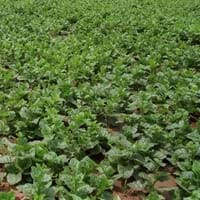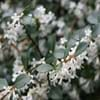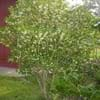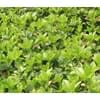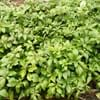What is
Life Span
Perennial
Perennial
Type
Broadleaf Evergreen
Vegetable
Origin
China, Japan
Southeastern Asia, India
Types
Heavenly Bamboo, Nandina 'Colerno'
Dwarf Nandina 'Compacta'
Dwarf Nandina 'Filamentosa'
Heavenly Bamboo, Nandina 'Harbor Belle'
Heavenly Bamboo, Nandina 'Moon Bay'
Red Malabar Spinach, Green Malabar Spinach
Number of Varieties
30
99+
Not Available
Habitat
low mountains, Mountain tops, Mountains, Valley
Hot climate regions, Humid climates
USDA Hardiness Zone
6-11
Not Available
AHS Heat Zone
Not Available
12*7
Sunset Zone
21,22
H1, H2, 3a, 3b, 4, 5, 6, 7, 8, 9, 10, 11, 12, 13, 14, 15, 16, 17, 18, 19, 20, 21, 22, 23, 24
Habit
Clump-Forming
Vining/Climbing
Information
Plant Size
Minimum Height
30.00 cm
99+
2.40 cm
99+
Minimum Width
60.00 cm
99+
24.00 cm
99+
Plant Color
Flower Color
Not Available
Red, Green, Orange Red
Flower Color Modifier
Bicolor
Bicolor
Fruit Color
Not Available
White, Ivory
Leaf Color in Spring
Green, Purple, Copper
Green, Light Green
Leaf Color in Summer
Green, Purple
Green, Dark Green
Leaf Color in Fall
Green, Purple
Purple, Gray Green
Leaf Color in Winter
Red, Green, Purple
Purple, Gray Green
Shape
Leaf Shape
Acuminate
Heart-shaped
Thorns
No
No
Season
Plant Season
Spring, Summer, Fall, Winter
Spring, Summer, Fall, Winter
Growing Conditions
Sunlight
Full Sun, Partial Sun, Partial shade, Full Shade
Full Sun, Partial Sun, Partial shade
Growth Rate
Medium
Fast
Type of Soil
Loam, Sand
Clay, Loam
The pH of Soil
Acidic, Neutral, Alkaline
Neutral
Soil Drainage
Well drained
Well drained
Bloom Time
Not Available
Not Available
Repeat Bloomer
No
Yes
Tolerances
Drought
Drought
Care
Where to Plant?
Ground
Ground
How to Plant?
Seedlings
Leaf Cutting, Seedlings
Plant Maintenance
Medium
Medium
Watering Plants
Watering Requirements
Do not water frequently, Needs less watering
Do not let dry out between waterings, Requires consistently moist soil
In Summer
Lots of watering
Average Water
In Spring
Moderate
Moderate
In Winter
Average Water
Average Water
Soil
Soil pH
Acidic, Neutral, Alkaline
Neutral
Soil Type
Loam, Sand
Clay, Loam
Soil Drainage Capacity
Well drained
Well drained
Sun Exposure
Full Sun, Partial Sun, Partial shade, Full Shade
Full Sun, Partial Sun, Partial shade
Pruning
Remove damaged leaves, Remove dead branches, Remove dead leaves
Remove damaged leaves, Remove dead leaves
Fertilizers
All-Purpose Liquid Fertilizer
Nitrogen
Pests and Diseases
Red blotch
Aphids
Plant Tolerance
Drought
Drought
Facts
Flowers
Not Available
Showy
Flower Petal Number
Not Available
Single
Fruits
Showy Fruit
No
Yes
Edible Fruit
No
No
Fragrance
Fragrant Flower
No
No
Fragrant Fruit
No
No
Fragrant Leaf
No
No
Fragrant Bark/Stem
No
No
Showy Foliage
Yes
Yes
Showy Bark
No
No
Foliage Texture
Fine
Medium
Foliage Sheen
Glossy
Glossy
Evergreen
No
Yes
Invasive
No
Sometimes
Self-Sowing
No
Yes
Attracts
Mealybugs, Whiteflies
Not Available
Allergy
Not Available
Not Available
Benefits
Uses
Aesthetic Uses
Bonsai, Borders
Not Available
Beauty Benefits
Not Available
Not Available
Edible Uses
No
Yes
Environmental Uses
Air purification
Air purification
Plant Benefits
Medicinal Uses
Antirheumatic, Antitussive, Astringent
Folate, Iron, Low calories, Low Fats, Rich in Potassium, ß-carotene, Vitamin A, Vitamin C
Part of Plant Used
Fruits, Leaves
Leaves
Other Uses
Used for making informal hedge
Used As Food
Used As Indoor Plant
No
No
Used As Outdoor Plant
Yes
Yes
Garden Design
Container, Edging, Foundation, Groundcover, Hedges, Mixed Border, Topiary, Bonsai, Espalier
Container, Edible, Groundcover, Herb / Vegetable, Tropical, Vine
Scientific Name
Botanical Name
NANDINA domestica 'Nana Purpurea'
BASELLA alba
Common Name
heavenly bamboo
sacred bamboo
nandina
Ceylon Spinach, Malabar Spinach, Red Malabar Spinach
In Hindi
Dwarf Nandina
पोई
In German
Dwarf Nandina
Malabarspinat
In French
Nandina Dwarf
L’épinard de Malabar
In Spanish
Nandina enana
espinaca de Malabar
In Greek
Dwarf Nandina
Malabar Σπανάκι
In Portuguese
Nandina do anão
Malabar espinafre
In Polish
Dwarf Nandina
Szpinak Malabar
In Latin
Dwarf Nandina
Spinach Malabar
Classification
Kingdom
Plantae
Plantae
Phylum
Tracheophyta
Magnoliophyta
Class
Magnoliopsida
Eudicotyledones
Order
Ranunculales
Caryophyllales
Family
Berberidaceae
Basellaceae
Genus
Nandina
Basella
Clade
Angiosperms, Eudicots
Angiosperms, Core eudicots, Eudicots
Tribe
Not Available
Not Available
Subfamily
Not Available
Not Available
Number of Species
Not Available
Not Available
|
||
|
||
|

